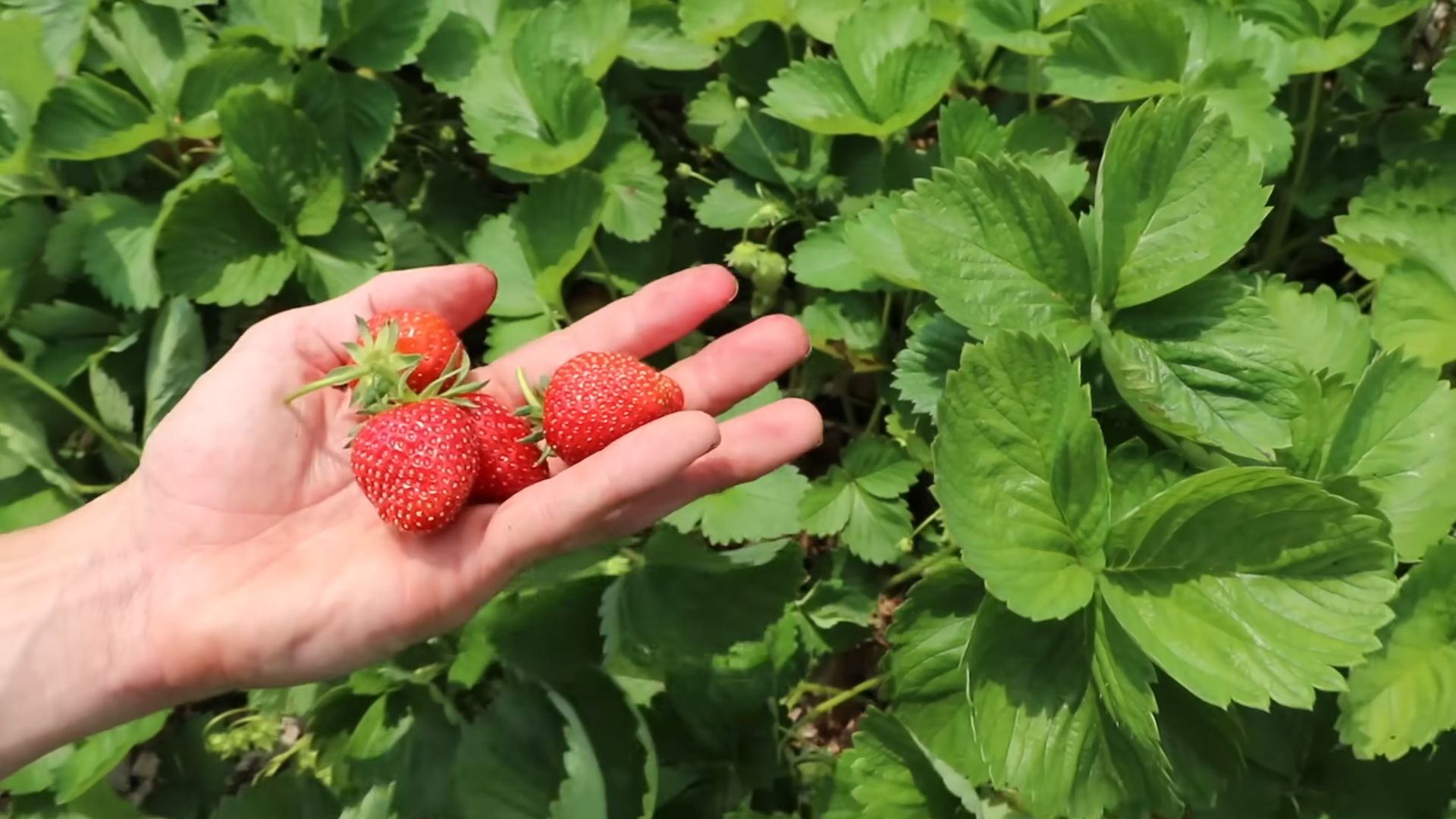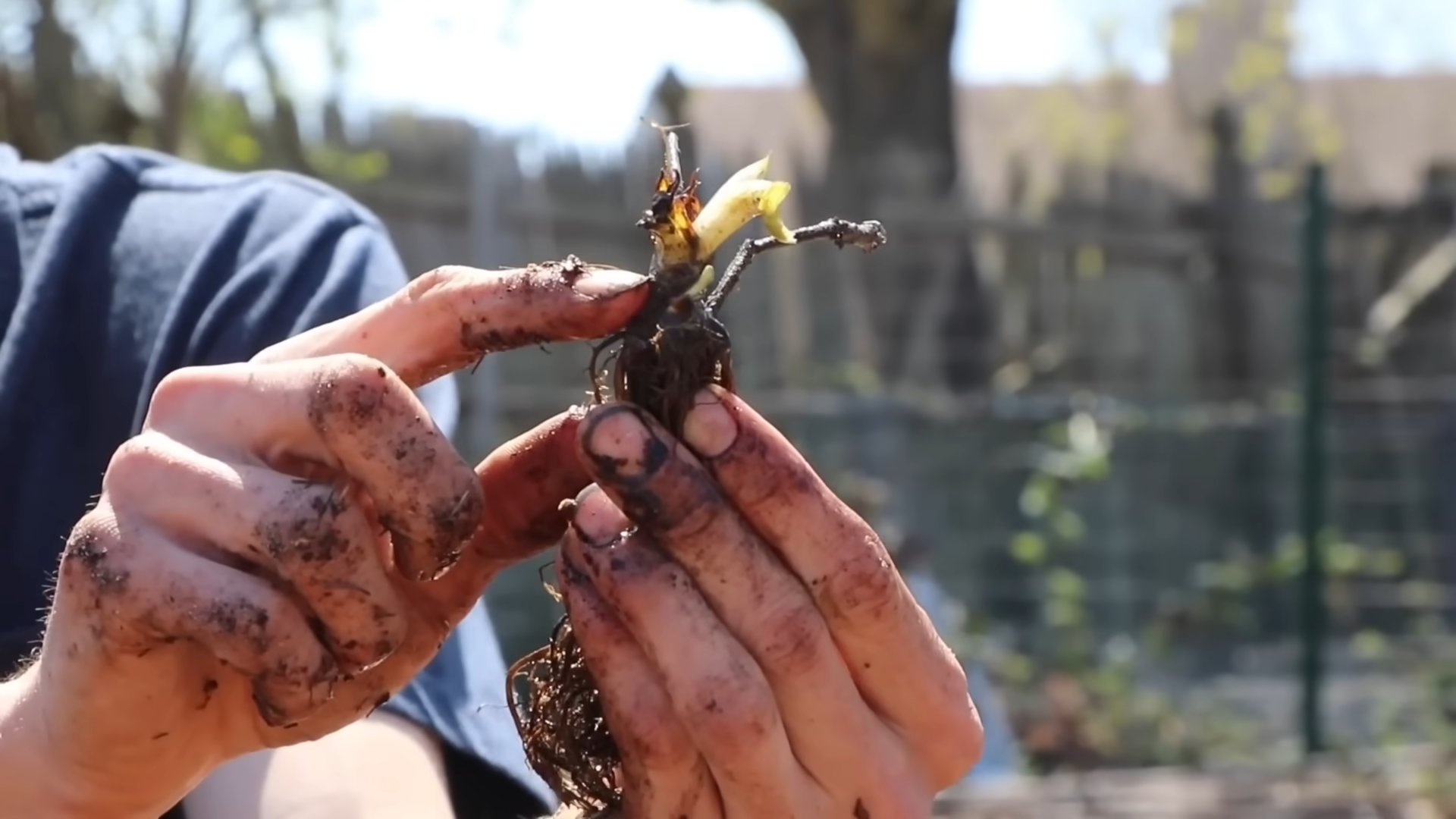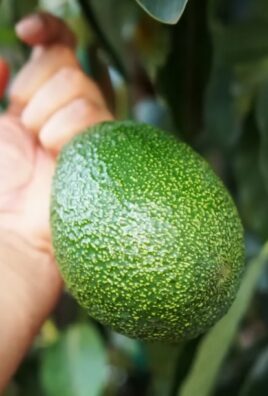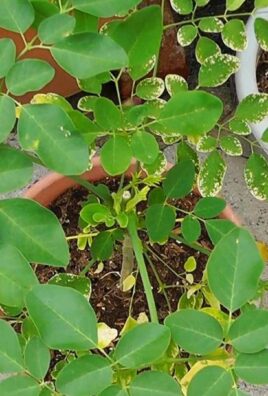Grow Strawberries Indoors and enjoy the sweet taste of summer all year round! Imagine plucking fresh, juicy strawberries right from your own home, even when the snow is falling outside. Sounds like a dream, right? Well, it doesn’t have to be! For centuries, humans have cultivated plants indoors, from ancient Egyptians growing herbs to Victorian-era conservatories brimming with exotic flora. But you don’t need a sprawling greenhouse to enjoy the fruits (literally!) of your labor.
In today’s busy world, finding moments of peace and connection with nature can be a challenge. That’s where this DIY guide comes in. Learning how to grow strawberries indoors is more than just a fun project; it’s a way to bring a little bit of the outdoors in, reduce your reliance on store-bought produce, and even boost your mental well-being. Plus, who can resist the satisfaction of nurturing a plant from seed to delicious berry?
This article will equip you with all the essential tricks and hacks you need to successfully cultivate these delightful red gems within the comfort of your own home. We’ll cover everything from choosing the right varieties and providing optimal lighting to mastering watering techniques and preventing common problems. Get ready to embark on a rewarding journey and transform your living space into a miniature strawberry patch!

Growing Strawberries Indoors: A Sweet DIY Project
Hey there, fellow plant enthusiasts! Ever dreamt of plucking fresh, juicy strawberries right from your kitchen in the middle of winter? Well, dream no more! Growing strawberries indoors is totally achievable, and I’m here to guide you through the process. It’s a rewarding project that brings a touch of summer into your home, no matter the season.
Choosing the Right Strawberry Variety
Not all strawberry varieties are created equal, especially when it comes to indoor growing. Some are better suited for containers and indoor environments than others. Here’s what I recommend:
* Everbearing Varieties: These are your best bet. Everbearing strawberries produce multiple harvests throughout the growing season, making them perfect for continuous indoor enjoyment. Look for names like “Tristan,” “Tribute,” or “Seascape.”
* Day-Neutral Varieties: Similar to everbearing, day-neutral varieties aren’t as sensitive to day length, meaning they’ll produce fruit regardless of how many hours of sunlight they receive. “Albion” is a popular choice.
* Avoid June-Bearing Varieties: These produce one large crop in the spring and then stop. They’re not ideal for indoor growing where you want a more consistent harvest.
Gathering Your Supplies
Before we dive into the planting process, let’s make sure you have everything you need. This is crucial for a smooth and successful strawberry-growing journey.
* Strawberry Plants: You can buy bare-root strawberry plants or established plants in small pots. Bare-root plants are generally cheaper, but established plants will give you a head start.
* Containers: Choose pots that are at least 6-8 inches in diameter. Hanging baskets, window boxes, or even repurposed buckets work great! Just make sure they have drainage holes.
* Potting Mix: Use a high-quality, well-draining potting mix. Avoid using garden soil, as it can compact and not provide adequate drainage. A mix specifically formulated for containers is ideal.
* Grow Lights (Optional but Recommended): While strawberries need sunlight, indoor light might not be sufficient, especially during winter. Grow lights will ensure they get the light they need to thrive. LED grow lights are energy-efficient and work wonders.
* Fertilizer: A balanced liquid fertilizer (like 10-10-10) will provide your plants with the nutrients they need to produce delicious berries.
* Watering Can or Spray Bottle: For gentle and even watering.
* Small Hand Trowel: For planting and transplanting.
* Scissors or Pruning Shears: For trimming runners and dead leaves.
Planting Your Strawberries
Alright, let’s get our hands dirty! This is the fun part where we bring our strawberry dreams to life.
1. Prepare Your Containers: Fill your chosen containers with the potting mix, leaving about an inch of space at the top.
2. Planting Bare-Root Strawberries: If you’re using bare-root plants, soak the roots in water for about an hour before planting. This will help rehydrate them. Dig a small hole in the potting mix, making sure the crown of the plant (where the roots meet the stem) is level with the soil surface. Spread the roots out gently and cover them with soil.
3. Planting Established Strawberries: Gently remove the strawberry plant from its original container. Loosen the roots slightly with your fingers. Dig a hole in the potting mix large enough to accommodate the root ball. Place the plant in the hole, ensuring the top of the root ball is level with the soil surface. Backfill with potting mix and gently firm the soil around the plant.
4. Water Thoroughly: After planting, water your strawberries thoroughly until water drains out of the drainage holes. This will help settle the soil and encourage root growth.
Providing the Right Environment
Strawberries are pretty adaptable, but they do have some specific needs to thrive indoors. Here’s how to create the perfect environment for them:
* Light: Strawberries need at least 6-8 hours of sunlight per day. If you don’t have a sunny window, use grow lights. Position the lights about 6-12 inches above the plants.
* Temperature: The ideal temperature for strawberries is between 60-80°F (15-27°C). Avoid placing them near drafts or heat sources.
* Watering: Water your strawberries when the top inch of soil feels dry to the touch. Avoid overwatering, as this can lead to root rot. Water deeply, ensuring the water reaches the roots.
* Humidity: Strawberries prefer moderate humidity. If your home is dry, you can increase humidity by placing a tray of water near the plants or using a humidifier.
* Air Circulation: Good air circulation helps prevent fungal diseases. You can achieve this by placing a small fan near the plants or opening a window occasionally.
Fertilizing Your Strawberries
To encourage healthy growth and abundant fruit production, you’ll need to fertilize your strawberries regularly.
1. Start Fertilizing After Planting: Wait about two weeks after planting before you start fertilizing. This gives the plants time to adjust to their new environment.
2. Use a Balanced Liquid Fertilizer: A 10-10-10 fertilizer is a good choice. Follow the instructions on the fertilizer label for dilution rates.
3. Fertilize Every 2-4 Weeks: During the growing season (spring and summer), fertilize your strawberries every 2-4 weeks. Reduce the frequency during the dormant season (fall and winter).
4. Apply Fertilizer After Watering: This helps prevent fertilizer burn.
Pollinating Your Strawberries
Since you’re growing strawberries indoors, they won’t have access to natural pollinators like bees. You’ll need to hand-pollinate them to ensure fruit production. Don’t worry, it’s easier than it sounds!
1. Use a Small Paintbrush or Cotton Swab: Gently brush the pollen from the center of one flower onto the center of another flower.
2. Pollinate Every Day: Pollinate your strawberries every day when the flowers are open.
3. Observe the Flowers: If pollination is successful, the base of the flower will start to swell and develop into a strawberry.
Dealing with Runners
Strawberry plants produce runners, which are long stems that grow horizontally and develop new plantlets at the nodes. While runners are great for propagating new plants, they can also divert energy away from fruit production.
* Trim the Runners: If you want to maximize fruit production, trim the runners as they appear. Use scissors or pruning shears to cut them off close to the main plant.
* Propagate New Plants: If you want to propagate new strawberry plants, you can allow the runners to root in small pots filled with potting mix. Once the plantlets have developed roots, you can separate them from the mother plant.
Harvesting Your Strawberries
This is the moment you’ve been waiting for! Harvesting your own homegrown strawberries is incredibly satisfying.
1. Wait Until They’re Fully Ripe: Strawberries are at their sweetest and juiciest when they’re fully ripe. Look for berries that are bright red and slightly soft to the touch.
2. Gently Pluck the Berries: Gently pluck the berries from the plant, leaving a small piece of the stem attached.
3. Enjoy Immediately: Freshly picked strawberries are best enjoyed immediately. You can also store them in the refrigerator for a few days.
Troubleshooting Common Problems
Even with the best care, you might encounter some problems while growing strawberries indoors. Here are some common issues and how to address them:
* Lack of Fruit: This could be due to insufficient light, poor pollination, or lack of nutrients. Make sure your plants are getting enough light, hand-pollinate them regularly, and fertilize them as needed.
* Yellowing Leaves: This could be a sign of overwatering, underwatering, or nutrient deficiency. Check the soil moisture and adjust your watering accordingly. Fertilize your plants with a balanced fertilizer.
* Pests: Common strawberry pests include aphids, spider mites, and whiteflies. You can control these pests by spraying your plants with insecticidal soap or neem oil.
* Fungal Diseases: Fungal diseases like powdery mildew can affect strawberries. Ensure good air circulation and avoid overwatering. You can also treat fungal diseases with a fungicide.
Enjoying Your Indoor Strawberry Harvest
Growing strawberries indoors is a rewarding experience that brings the taste of summer into your home year-round. With a little care and attention, you can enjoy a continuous supply of fresh, juicy strawberries. So, grab your supplies, follow these steps, and get ready to indulge in the sweet taste of homegrown goodness! Happy growing!

Conclusion
So, there you have it! Growing strawberries indoors might seem like a daunting task, but with a little patience, the right setup, and this straightforward DIY trick, you can enjoy the sweet taste of homegrown berries year-round, regardless of the weather outside. This isn’t just about having fresh strawberries; it’s about connecting with nature, learning a new skill, and experiencing the satisfaction of nurturing something from seed (or seedling!) to delicious fruit.
Why is this DIY method a must-try? Because it empowers you to control the growing environment, maximizing your chances of success. You’re not at the mercy of unpredictable weather patterns or seasonal limitations. Plus, it’s incredibly rewarding to harvest your own strawberries, knowing exactly where they came from and what went into growing them. Think of the possibilities: fresh strawberry shortcake in the middle of winter, vibrant additions to your morning smoothies, or simply a healthy and delicious snack whenever the craving strikes.
But don’t stop there! Experiment with different strawberry varieties to find your favorites. Try alpine strawberries for their intense flavor and continuous fruiting, or everbearing varieties for a more consistent harvest throughout the year. Consider using different types of growing mediums, such as coco coir or perlite, to see how they affect drainage and nutrient uptake. You can even explore hydroponic systems for a more advanced and efficient indoor strawberry garden.
And remember, the key to success lies in providing your strawberry plants with the right conditions: ample light, proper watering, and consistent fertilization. Don’t be afraid to adjust your approach as needed, based on your plants’ specific needs and your own observations.
We’re confident that with this DIY trick, you’ll be well on your way to enjoying a bountiful harvest of delicious, homegrown strawberries. So, grab your supplies, get your hands dirty, and embark on this exciting indoor gardening adventure.
We encourage you to try this method for growing strawberries indoors and share your experiences with us! Let us know what worked well for you, what challenges you encountered, and any tips or tricks you discovered along the way. Your feedback will not only help us improve this guide but also inspire other aspiring indoor gardeners to give it a try. Share your photos and stories on social media using #IndoorStrawberries and let’s create a community of indoor strawberry enthusiasts! Happy growing!
Frequently Asked Questions (FAQ)
What is the best strawberry variety to grow indoors?
While many strawberry varieties can be grown indoors, some are better suited than others. Everbearing and day-neutral varieties are generally recommended because they produce fruit throughout the growing season, unlike June-bearing varieties that produce one large crop. Alpine strawberries are also a great option for indoor growing due to their compact size and continuous fruiting. Some popular choices include:
* Everbearing: Tristar, Ozark Beauty, Quinault
* Day-Neutral: Albion, Seascape
* Alpine: Alexandria, Yellow Wonder
Ultimately, the best variety for you will depend on your personal preferences and the specific growing conditions in your home. Experiment with different varieties to find the ones that thrive in your indoor environment and produce the flavors you enjoy most.
How much light do indoor strawberries need?
Strawberries require a significant amount of light to produce fruit. Ideally, they need at least 6-8 hours of direct sunlight per day. However, since natural sunlight can be limited indoors, especially during the winter months, supplemental lighting is often necessary.
Full-spectrum LED grow lights are an excellent option for providing the necessary light. Position the lights about 6-12 inches above the plants and ensure they are on for 12-16 hours per day. Monitor your plants closely and adjust the light intensity and duration as needed. Signs of insufficient light include leggy growth, pale leaves, and a lack of flowering.
How often should I water my indoor strawberry plants?
Watering frequency depends on several factors, including the type of growing medium, the size of the pot, and the ambient temperature and humidity. As a general rule, water your strawberry plants when the top inch of soil feels dry to the touch.
Avoid overwatering, as this can lead to root rot. Ensure that your pots have adequate drainage holes to prevent water from accumulating at the bottom. When watering, water deeply until water drains out of the bottom of the pot. This ensures that the entire root system is adequately hydrated.
What type of fertilizer should I use for indoor strawberries?
Strawberries are heavy feeders and require regular fertilization to produce abundant fruit. Use a balanced fertilizer specifically formulated for strawberries or fruiting plants. A fertilizer with an NPK ratio of 10-10-10 or 12-12-12 is a good starting point.
Fertilize your plants every 2-4 weeks during the growing season, following the instructions on the fertilizer label. Avoid over-fertilizing, as this can burn the roots and damage the plants. You can also supplement with organic fertilizers such as compost tea or fish emulsion.
How do I pollinate my indoor strawberry plants?
Indoor strawberry plants often require manual pollination since there are no bees or other insects to do the job. You can easily pollinate your plants using a small, soft-bristled brush or a cotton swab.
Gently brush the pollen from the stamen (the part with the pollen) of one flower onto the pistil (the central part) of another flower. Repeat this process for all the flowers on your plants. You can also use a small fan to gently blow air over the plants, which can help to distribute the pollen.
Why are my strawberry plants not producing fruit?
There are several reasons why your strawberry plants might not be producing fruit:
* Insufficient light: Strawberries need ample light to produce fruit. Ensure they are getting at least 6-8 hours of direct sunlight or 12-16 hours of artificial light per day.
* Lack of pollination: Indoor strawberry plants often require manual pollination. Use a small brush or cotton swab to transfer pollen from one flower to another.
* Improper watering: Overwatering or underwatering can stress the plants and prevent them from fruiting. Water when the top inch of soil feels dry to the touch and ensure adequate drainage.
* Nutrient deficiencies: Strawberries are heavy feeders and require regular fertilization. Use a balanced fertilizer specifically formulated for strawberries or fruiting plants.
* Temperature fluctuations: Strawberries prefer consistent temperatures. Avoid exposing them to extreme temperature fluctuations.
How do I deal with pests and diseases on my indoor strawberry plants?
Indoor strawberry plants are generally less susceptible to pests and diseases than outdoor plants. However, they can still be affected by common pests such as aphids, spider mites, and whiteflies.
Regularly inspect your plants for signs of pests or diseases. If you find any, treat them promptly with insecticidal soap, neem oil, or other organic pest control methods. Ensure good air circulation around your plants to prevent fungal diseases. Remove any dead or diseased leaves promptly to prevent the spread of infection.
Can I grow strawberries from seed indoors?
Yes, you can grow strawberries from seed indoors, but it requires more patience and effort than starting with seedlings. Strawberry seeds require a period of cold stratification before they will germinate. This means they need to be exposed to cold temperatures for several weeks.
To cold stratify your strawberry seeds, place them in a damp paper towel inside a plastic bag and store them in the refrigerator for 4-6 weeks. After cold stratification, sow the seeds in a seed-starting mix and keep them moist and warm. Germination can take several weeks.
How long does it take to grow strawberries indoors?
The time it takes to grow strawberries indoors depends on whether you start from seed or seedlings. If you start from seed, it can take several months to reach the fruiting stage. If you start from seedlings, you can expect to harvest your first strawberries within a few weeks to a few months, depending on the variety and growing conditions.
What size pot should I use for growing strawberries indoors?
A pot that is at least 6-8 inches in diameter and 6-8 inches deep is generally sufficient for growing a single strawberry plant. However, larger pots are always better, as they provide more room for the roots to grow and allow for better drainage. You can also grow multiple strawberry plants in a larger container, such as a hanging basket or a trough.





Leave a Comment